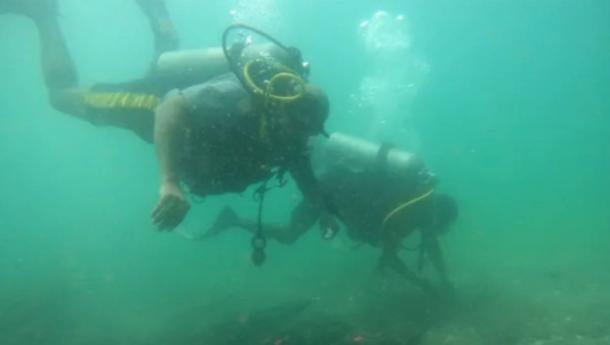🔴 Website 👉 https://u-s-news.com/
Telegram 👉 https://t.me/usnewscom_channel
A new study links a shipwreck off the Kenyan coast of Ngomeni to be Vasco de Gama’s famed ship, the Sāo Jorge, from one of his many voyages through the Indian Ocean. The remains of the vessel were found near the Kenyan town of Malindi in 2013 – dated contemporaneously with 7 other Portuguese shipwrecks from this era and area. The Sāo Jorge sank in 1524. Once the identity is confirmed, this is going to be the earliest known European shipwreck in the Indian Ocean.
Corroborating the Correct Ship
“… we don’t know for sure,” mused Filipe Castro, maritime archaeologist at the University of Coimbra in Portugal and lead author of the new study published in the Journal of Maritime Archaeology. Their next step is to conduct an archaeological survey of the coral reefs stretching north from Malindi to Ras Ngomeni – 15 miles (25 kilometers) long. The ship is nestled amid the corals on the seabed, with timbers from the ship’s hull and frame unearthed in two archaeological trenches at the site.
“I think this is a unique shipwreck. It is a treasure,” Castro told Live Science.
The wreck lies about 488 meters (1,600 feet) off the coast of Malindi, Kenya, at a depth of about 20 feet. (Filipe Castro/Journal of Maritime Archaeology)
In 2013, underwater archaeologist Caesar Bita from the National Museums of Kenya, made the find. He is now assisting the team with the current investigation. Bita also recovered copper ingots and elephant tusks from the submerged site. Kenyan authorities are interested in converting this area into an underwater museum.
“Lying at shallow depths off the coast of Kenya, this ship is protected by the local population, who are part of this community archaeology project and who we intend to train so that they can monitor the finds and participate in their recording and analysis,” reported a press release by the Centre for Functional Ecology earlier this year.
Proposed portrait of Vasco da Gama.. (Daniel VILLAFRUELA/Public Domain)
Vasco and European Mercantilism: Portugal Sets Sail (and the Way)!
Vasco De Gama, renowned for pioneering the maritime route from Europe into the Indian Ocean in 1497 by circumnavigating the Cape of Good Hope at the southern tip of Africa, set sail on his final voyage with 20 ships. The Sāo Jorge was one of the ships; the only other ship that could have sunk, and also from the same fleet, was possibly the Nossa Senhora de Graça, which sank in 1544. The wreck lies about 1,640 feet (500 meters) from the shore, at a depth of about 20 feet (6 meters).
“Seeking to divert the trade in spices, cloth, and gold to their advantage – to the detriment of western Asia, Egypt, and Venice – the Portuguese rounded the Cape of Good Hope in 1498, and the fleet, led by Vasco da Gama, using knowledge gained from Bartolomeu Dias’s expedition in 1487–1488 and maybe also Pero de Covilham’s journey in 1494, burst into the Indian Ocean,” writes ethnologist and historian Philippe Beaujard for the Cambridge University Press in 2019.
The Portuguese had begun developing ships designed for war by 1518, called the galleon. The sailing ship had three or four masts, with mounted artillery having a 360º range, and build quality to create effective fortification against gales and storms. They received absolute permission from the papacy and the monarchy to set sail into the Indian and Pacific oceans. This model of shipping was quickly adopted by other mercantile powers in Europe, who added their own technological advancements to further advance colonial interests.
Investigating the Wreck
This groundbreaking project, led by a team of archaeologists from the HTC Maritime Archeology Laboratory, is supported by the National Museums of Kenya at the highest levels: Prof. Mary Gikungu, the Director-General, Edwin Abonyo, Chair of the Board, and Dr. Terer, Directorate of National Repository and Research, have all lent their expertise to the museum and excavation.
“We will build a real model of the ship and allow people to come and learn about its history. Vasco da Gama is believed to have used this ship during his many trade missions to the East African coast. The aim of this excavation is to create a museum to illustrate the history of the East African coast as a trade route for the Romans, Chinese, Portuguese and Arabs,” explained Bita to Malindi Kenya.
Top image: Vasco de Gama departing for India in 1497. Source: Roque Gameiro/Public Domain
By Sahir Pandey
